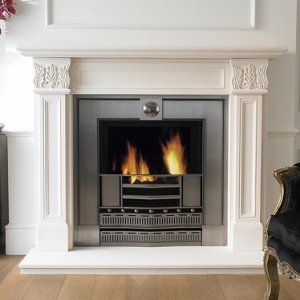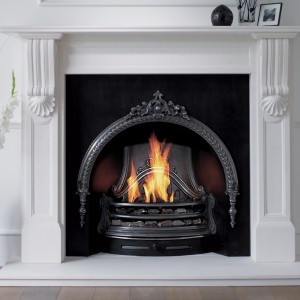A fireplace is more than just a source of warmth; it's a symbol of comfort, coziness, and timeless elegance. Whether you're envisioning a traditional wood-burning hearth or a modern gas fireplace, the installation process is a crucial step in bringing this iconic feature into your home. In this comprehensive guide, we will explore the ins and outs of fireplace installation, covering everything from planning and preparation to safety considerations and design choices. Whether you're a seasoned DIY enthusiast or considering hiring a professional, this article will provide you with the knowledge you need to make your fireplace installation a success.
Choosing the Right Fireplace Type
The first step in the fireplace installation process is choosing the right type of fireplace for your home. There are several options available, including wood-burning, gas, electric, and bio ethanol fireplaces. Each type has its advantages and limitations, so it's essential to select one that aligns with your preferences, lifestyle, and home design.
Wood-Burning Fireplaces: Known for their classic charm and genuine heat, wood-burning fireplaces require a chimney and regular maintenance. They are perfect for those who appreciate the authentic crackling sound and aroma of burning wood.
Gas Fireplaces: Convenient and efficient, gas fireplaces offer adjustable heat and flame settings, making them a popular choice for modern homes. They require access to a natural gas line or propane tank.
Electric Fireplaces: These are versatile and easy to install, requiring only a standard electrical outlet. Electric fireplaces come in various styles and can be installed in any room.
Ethanol Fireplaces: Ideal for eco-conscious homeowners, ethanol fireplaces burn clean and do not require a chimney. They offer a modern, minimalist aesthetic.
Planning and Preparation:
Before installing a fireplace, careful planning and preparation are essential to ensure a safe and successful project.
Local Codes and Regulations: Research your local building codes and regulations related to fireplace installation. Compliance with these rules is crucial for safety and legality.
Fireplace Location: Choose the optimal location for your fireplace, considering factors like room size, ventilation, and aesthetics. Ensure that your chosen spot has proper clearance from combustible materials.
Ventilation and Chimney: Depending on the type of fireplace you choose, you may need to install a chimney, venting system, or flue. Proper ventilation is critical to prevent smoke and carbon monoxide buildup.
Professional Consultation: If you're unsure about any aspect of the installation, consider consulting a professional fireplace installer or a certified chimney sweep. They can provide expert advice and guidance.
DIY vs. Professional Installation
Deciding whether to tackle the fireplace installation yourself or hire a professional is a crucial decision. Each option has its pros and cons.
DIY Installation: DIY projects can save money, but they require a good level of skill, knowledge, and tools. It's essential to follow manufacturer guidelines meticulously and, if necessary, consult online tutorials or instructional manuals.
Professional Installation: Hiring a certified fireplace installer ensures the job is done correctly and safely. Professionals have the experience to handle complex installations, deal with permits, and ensure compliance with local codes. This option is especially recommended for gas and wood-burning fireplaces.
Fireplace Design and Aesthetics
Your fireplace is not just about functionality; it's also a design element that can enhance the overall aesthetic of your home. Consider the following design aspects:
Mantels and Surrounds: Choose a mantel and surround that complements your home's style, whether it's traditional, contemporary, or rustic. Options range from wood and stone to marble and tile.
Hearth Materials: The hearth is the area directly in front of the fireplaces. Select materials that align with your design vision, such as slate, granite, or brick.
Fireplace Inserts: Enhance efficiency and style with inserts like glass doors or decorative screens. These can also improve safety by preventing sparks from escaping.
Accessories and Decor: Personalize your fireplace with decorative elements like art, candles, and toolsets. These can add character and charm to your space.
Safety Considerations:
Safety should be a top priority when installing a fireplace. Follow these essential safety guidelines:
Carbon Monoxide Detectors: Install carbon monoxide detectors in proximity to your fireplace to monitor gas or wood-burning emissions.
Clearances: Maintain proper clearances between the fireplace, combustible materials, and furniture. Refer to the manufacturer's specifications for guidance.
Fireproofing: Incorporate fire-resistant materials, like a non-combustible wallboard or insulation, in the surrounding area to prevent fire spread.
Regular Maintenance: Schedule routine maintenance and inspections to ensure the fireplace and chimney remain safe and functional.
Conclusion:
Fireplace installation is a rewarding project that adds both warmth and elegance to your home. Careful consideration of fireplace type, planning, and safety measures is crucial for a successful installation. Whether you choose to go the DIY route or hire a professional, the result will be a cozy focal point that enhances the ambiance of your living space. Remember that a well-maintained fireplace not only brings comfort but also contributes to the overall value and charm of your home. So, embrace the allure of a crackling fire, and let your fireplace installation project transform your house into a welcoming haven of warmth and style.


